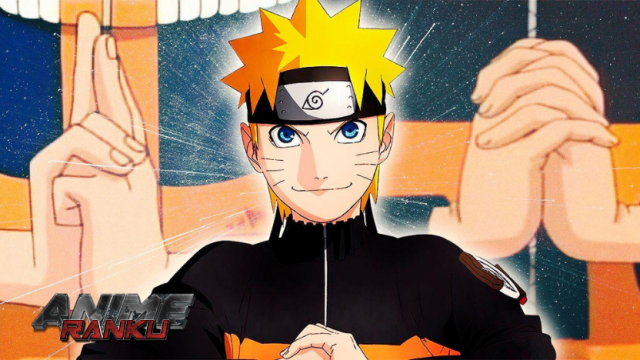Naruto, as a shonen classic, does an excellent job of depicting shinobi powers and abilities through various abilities and techniques. Hand signs are commonly used by fictional ninjas before using a technique. Hand gestures are popular in Naruto to indicate that something incredible is about to happen. In fact, the first time fans notice Kakashi’s true ability is when he uses hand signs at such high speed that they become difficult to follow. Not only Kakashi, but also Team 7’s first enemies, Zabuza and Haku, demonstrate their exceptional abilities through the use of multiple hand signs.
Ninjutsu and Genjutsu are two of the three major types of Jutsu, and both require hand signs. Taijutsu, on the other hand, is made up of purely physical techniques, so hand signs are unnecessary. While hand signs are common in the early arcs of the series, their use gradually decreases as the story progresses, to the point where hand signs become rare in Shippuden and are now almost non-existent in Boruto.
Why Are Hand Signs Important in Naruto and What Do They Mean?

Hand signs are used to perform Ninjutsu, Genjutsu and several other secret arts in Naruto. They were invented by Indra Otsutsuki to aid people in summoning and manipulating chakra, which is necessary to perform a technique. Hand signs depict how shinobi can manipulate their chakra properly. However, a highly-skilled shinobi can perform numerous Jutsu with one hand, while others require no signs at all, even though nearly every technique of Ninjutsu and Genjutsu is based on the 12 basic hand signs and seals.
There are different sequences and combinations of hand seals for every technique, all of which require memorization. For example, a complex technique such as Water Release: Water Dragon Bullet requires 44 combinations. Kakashi uses this technique after copying Zabuza during their fight, quickly becoming an iconic character. However, that case is only because Kakashi uses the technique for the first time and needs to perfectly mold his chakra accordingly.
These 12 basic hand signs are all based on animals — namely the rat, ox, tiger, hare, dragon, snake, horse, ram, monkey, bird, dog and boar. Apart from these 12 hand signs, there are unique signs specific to certain techniques that involve nature elements for Jutsu. Additionally, almost every shinobi clan has its signature techniques, which are activated by the combinations of specific hand signs. Hand signs are also not limited to shinobi. For instance, Shima and Fukasaku, elder toads from Mount Myoboku, use hand seals multiple times in the series. Furthermore, the Ten-Tails as well as Madara Uchiha’s Susanoo have been seen making hand signs.
How Many Hand Signs a Shinobi Knows Indicates His or Her Skills

Although techniques require a certain number of hand signs to work, it isn’t surprising for a skilled shinobi to be able to lessen that number for the same technique. For example, Tobirama can use the very same Water Dragon Bullet technique with just one hand seal, which is a testament to his abilities as a shinobi. Furthermore, although it is a standard practice to use both hands to perform the seals, there are several shinobi who can get the job done with just one.
Shinobi such as Minato, Sasuke, Itachi, Zabuza, Haku, Naruto, Boruto and many more require just one hand to use their techniques. The reason behind this is simple: it all boils down to how much skill a shinobi has. The more they practice, the better they get at performing such Jutsu. Sasuke’s Chidori is a good example of this; initially, Sasuke would use multiple hand signs to activate this technique and create a lightning blade. However, as he gains experience, he doesn’t require the use of any hand signs to use Chidori. Another example is his Fireball Jutsu, which also goes from requiring eight hand signs to barely needing any.
Why in Shippuden Do Hand Signs Decrease?

The first part of Naruto simply lays the foundation of the story and introduces the characters. Naruto and his classmates have barely become Genin, the lowest rank among Shinobi; therefore, for beginners such as them, it wouldn’t be possible to use a technique with a single sign or one-handed signs. However, Shippuden starts two and a half years after this, giving the young shinobi more than enough time to hone their skills.
Furthermore, techniques such as Rinnegan, Sharingan, Rasengan, and Sage Mode, which do not require any hand signs, are becoming more popular. As a result, the concept of hand signs fades into the background as the series focuses on all-powerful ocular techniques. During the Fourth Great Shinobi War, almost every new Jutsu introduced does not require hand signs, making the lack of hand signs even more noticeable. This may be a good thing for the story, because hand signs would be an unnecessary distraction from the intense heat of the war.
Removed Hand Signs to Reduce Redundancy

It’s common practice in shonen anime to build tension by extending specific scenes and then shortening them as the story progresses. In Dragon Ball Z, for example, Goku takes several minutes to first transform into a Super Saiyan, but as the story progresses, he begins transforming in an instant. Naruto is no exception, as repeating the same hand gestures each time a character employs a technique would waste a lot of screen time and add little to plot development.
Even in a manga, from an illustration point of view, recreating the same panel over and over with various hand signs would become redundant very quickly, thereby wasting not just the reader’s time but also valuable panel space. Therefore, taking into factors such as higher mastery of techniques and repetitive scenes, the concept of hand signs becomes a rare occurrence over time.















Leave a Reply